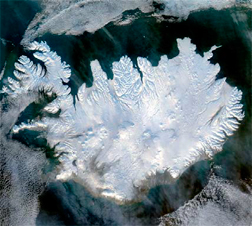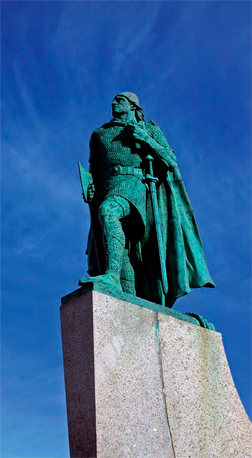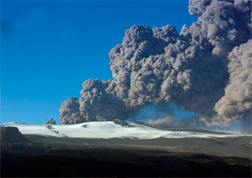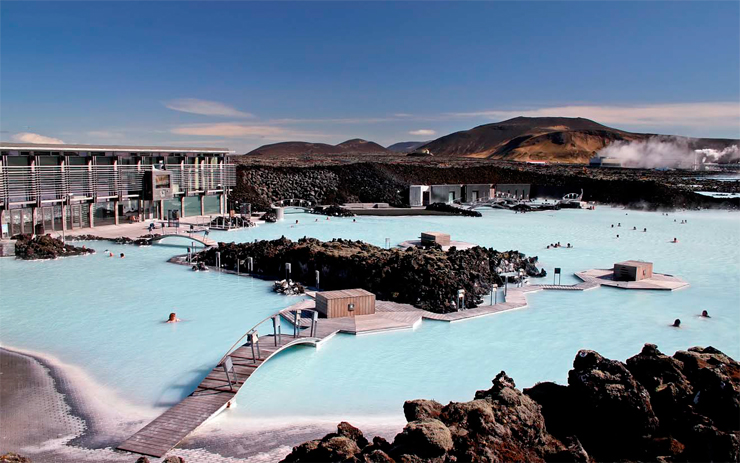Xavier Moret
Journalist and writer
Barcelona - SpainMiscellaneous
Xavier Moret was born in Barcelona in 1952 and studied English Philology and Journalism at Universidad Autónoma (Barcelona). However, he has learned much more from his travels. From being the translator of Superman and Batman in his youth, he has been lucky to have been able to earn a living by combining the three things that he loves most: reading, writing and travelling. He started working as a journalist with the now defunct Catalunya Express and El Correo Catalán newspapers and, for more than ten years, he formed part of the cultural section of El País. He has also worked in TV3 and La Vanguardia, and as from 2006 has been a travel reporter for El Periódico, which means that he has to travel around the world writing articles. At the age of 30 he wrote his first book, “The American that loved Moby Dick”, and in 1998 he published “América, América” his first travel book. In 2002 he won the Grandes Viajeros Award with “La isla secreta”, in 2004 the 23 d’abril prize with “Dr. Pearson” and in 2006 the Sent Soví Award with “El Bulli desde dentro”.






“The financial disaster struck in the autumn of 2008 due to a group of bankers and financiers who acted with the mentality of casino capitalism”
Iceland is a 103,000 sq.km. volcanic island situated in the Atlantic Ocean whose capital is positioned at 64º N latitude. It is part of Europe, has 330,000 inhabitants, the eldest rocks are just 16 million years old, its first permanent colonist was a Norwegian in the year 874, it has had its own parliament since the year 930 and only became independent from Denmark in 1944. Being so young and mature at the same time, it is attracting attention for the way that its financial crisis is evolving, how it manages the volcano emergencies and the natural wonders it offers to visitors. Xavier Moret is a journalist who has fallen in love with Iceland and tells us that it is an example for many reasons. He has written two books on the country and returns there whenever he can.
Iceland is a young country since it broke away from the Danish Crown in 1944, taking advantage of the chaos during the Second World War when Denmark was occupied by the Germans. But, who are the original inhabitants of Iceland?
The first settlers in Iceland were Vikings that were fleeing the King of Norway´s taxes. The first colonist, Ingolfur Arnason, arrived in what is now Reykjavik in 874 and it is well known where his farm was. The Book of Settlers states that the first inhabitants arrived on the island between 874 and 930. Before then, it was considered that Iceland was uninhabitable due to its volcanic nature. Nevertheless, there is evidence that some Irish hermits arrived before that date.
Today´s Icelanders have inherited from the old Vikings tenacity, a respect for nature and the refusal to surrender
How would you define the character of the Vikings and their influence on today´s Icelander?
The Viking character is reflected, above all, in the Sagas. They were warriors that could be fighting in battle and reciting poems at the same time, such as Egil1. They were a warlike nation that never surrendered and believed in gods that emerged from nature. Today´s Icelanders have inherited from the old Vikings tenacity, a respect for nature and a refusal to submission.
What are the Sagas? Do they still influence Icelandic thinking, culture and the way of thinking in the 21st century?
The Sagas are Iceland´s great literary milestones. For centuries, parents would read them to their children by the light of the fire during the long winter nights. They are epic stories based on true events of the first settlers, distorted over time, with imaginative additions and the appearance of trolls and other dark beings. They were written down in the 13th century and the Icelanders still adore them today.
The Thingvellir valley is very special from the geological point of view, as the expression of the opening between the Eurasian and North American plates. However, above all, for the Icelanders, it is a symbolic place from the socio-political point of view. What happened there more than ten centuries ago and still occurs each year?
Thingvellir is a marvellous place where the first settlers of the island would meet, once a year at an assembly. In 930 the Althing was born there and it is the oldest Parliament that is still active. The Spokesman of the Law would quote the laws by memory from the top of a rock and the disputes between neighbours would be resolved. When independence was proclaimed on June 17th 1944, 20,000 Icelanders met there and each year on that date, they still gather.
In Reykjavik, opposite the Cathedral (Dómkirkjan), there is a statue of Leifur Eriksson, the first Viking and European to explore the Vinland region, in about the year 1000, which is now part of Terranova and Labrador in Canada. This statue was a gift to the Icelanders from the U.S. in 1930 to commemorate the millennium since the founding of Althing (the Icelandic Parliament). Why do you think that such an important discovery, far before Christopher Columbus´ birth, has not transcended to the European history books?
The discovery of America (in fact, only Vinland) in the year 1,000 by Leifur Eriksson, the son of Eric the Red, has a very different connotation to the discovery by Columbus. Both Erik and Leifur were fleeing Iceland in search of new lands where they could live outside the law. So, they were not going to broadcast it as opposed to Columbus who went in the name of the Spanish kings and, since it involved taking possession of land in the name of the Crown, his discovery was proclaimed from the rooftops.
Volcanic eruptions are, in fact, the reason why Iceland was considered to be uninhabitable for a long time. When Laki erupted in 1783, the King of Denmark considered evacuating the island
It is said in Iceland that the master Jules Verne described the marvellous landscapes and the mysterious atmosphere of the Sagas very successfully in his science-fiction novel- “Voyage to the centre of the Earth”. However, many tourists discover when they get to the Snæfell volcano, that they cannot descend the chimney since it is blocked by an icecap. If he never visited the country, how do you think that Jules Verne obtained all of this information?
Jules Verne was a visionary writer that set his novels in many countries which he had not set foot in. But he was well documented. According to his biographer, Herbert Lottman, he wrote this novel in 1864 because he was fascinated by volcanoes. In fact, René de Pont-Jest accused him of plagiary as he had published a philosophical tale in the Revue Contemporaine with a similar subject. Anyway, the Icelanders say, sarcastically, that if it was true that you could reach Sicily by the Snaefellness crater, the island would have been deserted a long time ago.

The historical record, which can still be seen, reveals that the eruption of Eldgja in the year 934, Hekla in 1104, Laki in 1783 and Askja in 1875, were of cataclysmic proportions. What do you know of the suffering of Iceland´s population from this era during these catastrophes?
It is a fact that the volcanic eruptions are the reason why Iceland was considered to be uninhabitable for a long time. The numerous fields of lava throughout the island provide an idea of the damaged that they caused and one should also consider the toxic emissions. Hekla was considered to be the Gate to Hell and, up until 1750, nobody had reached its peak. When Laki erupted in 1783, the King of Denmark considered evacuating the island. The Askja eruption caused strong emigration of Icelandic farmers to America because the lava destroyed their best land.
Statistics indicate that there is a volcanic eruption in Iceland every four years. Recently, Europeans were very conscious of Eyjafjallajökull for its effect on air traffic in 2010. Where do the volcano experts expect the next eruption to happen?
The Icelandic volcanologists think that the Katla vulcano, that erupts more or less every 50 years, may be the next. Hekla is another of the volcanoes that is being watched closely.
The eruption of the Grimsvötn volcano in 2004 kept the scientific community on edge as it happened underneath the Vatnajökull glacier, melting an enormous quantity of ice which, on release, caused huge flooding in the Southeast of the country. What were the effects on the infrastructure in the affected area?
Highway number 1, which goes around the island, was cut off due to the flooding produced by the melting of the ice which was on top of the volcano. If this were to happen on a grand scale, it would undoubtedly be a huge problem, as the Vatnajökull glacier occupied an area equivalent to two times the size of Majorca.
The Icelandic volcanologists think that the Katla vulcano, that erupts more or less every 50 years, may be the next
Driving in winter in Iceland on the Ring Road, or even on the inland roads, must not be an easy job. What experiences have you had on the road?
The Ring Road is good, mostly asphalted, but problems arise when you go on the secondary roads where you often have to cross rivers and rocky or waterlogged areas. If you kill one of the many sheep on the island by accident, you have to pay for it. People there are very responsible. I remember that in Reykjavik we scraped a car whilst parking and an Icelandic friend with whom we were travelling immediately reported it to the police.
“Iceland, revolution under the volcano” by Xavier Moret in brief:
Eyjafjallajökull and the crisis
“It was solidarity, meaning Icelandic style
solidarity, in extreme situations that was
activated especially when there was a volcanic
eruption, a threat against which everyone
was prepared to join forces. However,
it was not easy to know how to pull together
against the economic crisis”.
Not only Björk…
“I remember that when I commented to
Einar that there were far more musicians
per square metre in Iceland than in Spain,
he shrugged his shoulders and said: that is
normal. What do you want the youngsters
here to do? They cannot go to the beach
like in Spain. They have to do something so
they get together in a garage and form a
musical group”.
Secret discoveries: the Sagas and America
“For the history of the universe, it is as if
the Scandinavian books and wars did not
exist; everything is uncommunicated and
without trace, as if it happened in a dream
or those crystal balls that fortune tellers
use. In the 12th century, Icelanders discovered
the novel, the art of Cervantes and
Flaubert, and this discovery is as secret
and futile for the rest of the world, as their
discovery of America”.
The financial crisis, disaster, kreppa
“What happened here -Arthur summarized
before ordering the food- was, at the end
of the day, what you would expect when you
put together a group of adolescents, crates
of beer and car keys. You can be sure that
it will end badly. Teenagers will drink too
much, will drive drunk and end up crashing
the car”.
“The figures were already alarming before
the big collapse: Iceland´s three main banks
-Glitnir, Landsbanki y Kaupthing- which were
privatised in 2001, had a combined external
debt that exceeded five times the nation´s
GNP and amounted to EUR 160,000 per
inhabitant. They operated in twenty countries
and had bought leading companies in
the UK and Denmark. Corrupt bankers authorized
loans to themselves, their friends
and some politicians, without asking for any
guarantees. Those were the years in which
everyone worshiped the BuyKings (a play on
words between “Vikings” and “kings of buying”),
who were the most similar in Europe
to the Arab Sheiks”.
“The Kaupthing bank was nationalised and
the other two were intervened by the State
-Arthur went on-. The three of them represented
around 90% of Iceland´s banking
system. Now they are managed by women.
They have had to sort out the mess created
by the men”.
“The Government asked for help from the
IMF that approved a 2,100 million dollar
loan, which was backed by another one of
2,500 million from other Nordic countries.
Iceland had to be rescued by the IMF who
imposed the usual measures: lower salaries
and higher taxes. The Icelanders purchasing
power has been reduced and the
Welfare State has suffered the effects”.
Geoestrategy and Global Warming
“It is interesting to look at it from the strategic
geopolitical point of view -Arthur
continued-. First of all the North American
base linked Iceland to the United States,
after the country looked towards Europe
and now, after the crisis, there are those
that think they should join the European
Union, although this is a very controversial
subject. In any event – he smiled – Iceland
is one of the best positioned countries in
the world, half way between Europe and
America, and is evident that it will benefit
from global warming”.
The “revolution of the saucepans”
“With regard to the demonstrations, in 2009
they provoked the holding of new elections
and a change of Government. The reaction
of the Icelanders was a real lesson for some
politicians who intended to go on after the
crisis as if nothing had happened”.
What was the economic situation in Iceland before the crisis and how did they get to the downfall?
Prior to the crisis there was euphoria in Iceland. The economy was going well, the banks were announcing optimistic years ahead and, as if that was not enough, a survey showed that Iceland was the place where the happiest people in the world lived. The collapse arrived in 2008 due to a group of bankers and financiers that risked too much and speculated, promising very high interest rates and acting with a casino capitalism mentality. In the end they crashed.
The collapse arrived in 2008 due to a group of bankers and financiers that risked too much and speculated, promising very high interest rates and acting with a casino capitalism mentality. In the end they crashed
Who was responsible for Iceland´s economic crash as from October 2008?
The unconscious bankers who were allied to corrupt financiers and politicians are the ones to be blamed. Whilst all was going well, the politicians closed their eyes to irregular operations. When the bubble burst, people did not stand still and sought out the guilty ones.
Why do you think that women play such an important role in the country´s society and politics?
For centuries, when Iceland was just a county of fishermen, the men went off to sea for weeks on end and women stayed in charge of the family economy. In fact, Vigdis Finnbogadóttir was the first female President in 1980 and was re-elected in 1996. The people have an excellent memory of her.
Iceland Catastrophe Insurance (ICI)
Iceland Catastrophe Insurance was founded in 1975 as a public company by a special law passed by the Icelandic Parliament (Althing) and operates as an insurance company.
Catastrophe cover is provided under a separate policy with a sum insured for buildings which is in accordance with the evaluation for fire, as per the State Property Registry. Contents are covered for the agreed value in the fire insurance and infrastructures at replacement cost.
It covers direct damage by earthquake, volcanic eruption, avalanches of snow, landslide and flood. It is obligatory to acquire it with all buildings and contents that are insured under an insurance policy. Storm cover remains in the private sector. Consequential and indirect damage is not covered by the ICI.
The private insurance companies collect the catastrophe premium together with the fire premiums in exchange for a commission. Certain infrastructures, even though they are not insured against fire, are obliged to be insured with the ICI (if they are public property), such as the geothermic heating systems, water treatment installations and sewers, bridges and ports, electrical distribution installations and systems, telephone systems and distribution networks and chair lifts.

Rates are fixed by law and one single rate of 0.25 per mille is applied for buildings and contents. For infrastructures it is 0.2 per mille. A deductible of 5% per claim is applicable.
The ICI evaluates and manages the claims. It purchases Stop Loss reinsurance cover in the international market.
References:
Natural Catastrophes Insurance Cover. A Diversity
of Systems. Consorcio de Compensación
de Seguros, 2008.
World Economic Forum http://www.weforum.org/
What economic sectors does the Icelandic economy currently depend on?
Cod fishing is still the basis of Iceland´s economy although, in recent years, the Government has been promoting the aluminium manufacturing industry. Tourism is on the rise but it is concentrated only in the summer months.
Icelanders are very conscientious with regard to nature. They consider that it has to be preserved and passed down to their children in good condition
Preservation of the environment forms part of the inhabitants of Iceland´s religion. What are the opinions with regard to the Kárahnjúkar dam in the fjords on the East coast?
Icelanders are very conscientious with regard to nature. They consider that it has to be preserved and passed down to their children in good condition. For this reason, dams such as the Kárahnjúkar, which have flooded various valleys in the Northeast of the country, are not well looked upon. The Government alleges that they are necessary for supplying the aluminium factories but the majority of the Icelanders are against them and have gone out onto the street in protest.
What smells remind you of Iceland?
When you open the water tap, the smell of sulphur immediately embraces you. This is normal because the hot water comes from the underground volcanic activity. The use of geothermal energy, on the other hand, means that there is almost no pollution in Iceland.
Are you thinking of returning to Iceland to write more books?
I have travelled to Iceland a dozen times as I love the country and I am lucky to have friends there. I have already written two books: the first, “La isla secreta” to narrate my fascination for the island and explain how life is there. The second, “Islandia, revolución bajo el volcán” was written to explain what the 2008 crisis meant and how the country has changed.
http://www.xaviermoret.com/
1 The Egil Skallagrímson Saga is an Icelandic tale written by at the beginning of the 8th century by Snorri Sturluson. The main character is the Egil Skallagrímsson, the poet-warrior.



